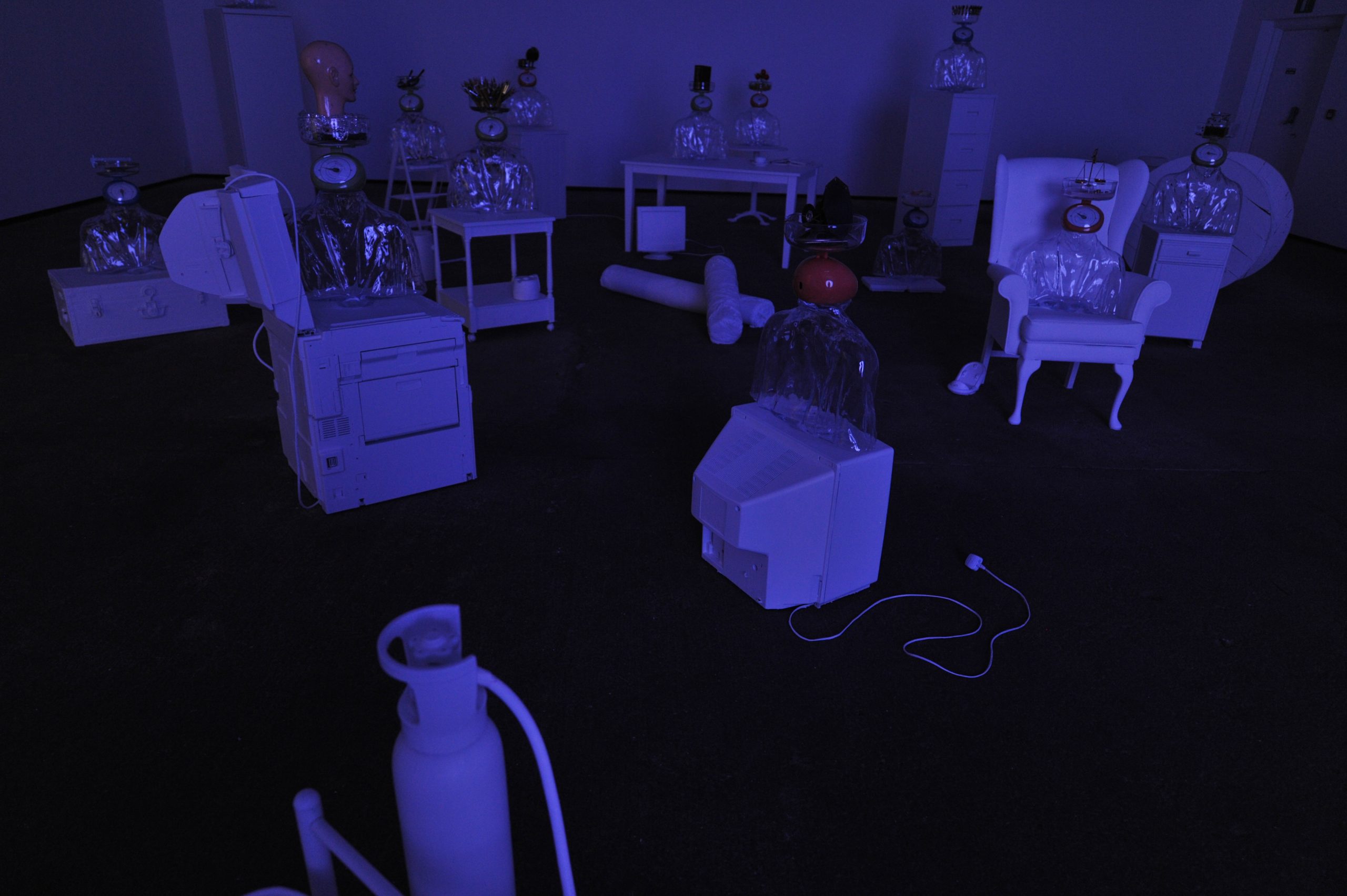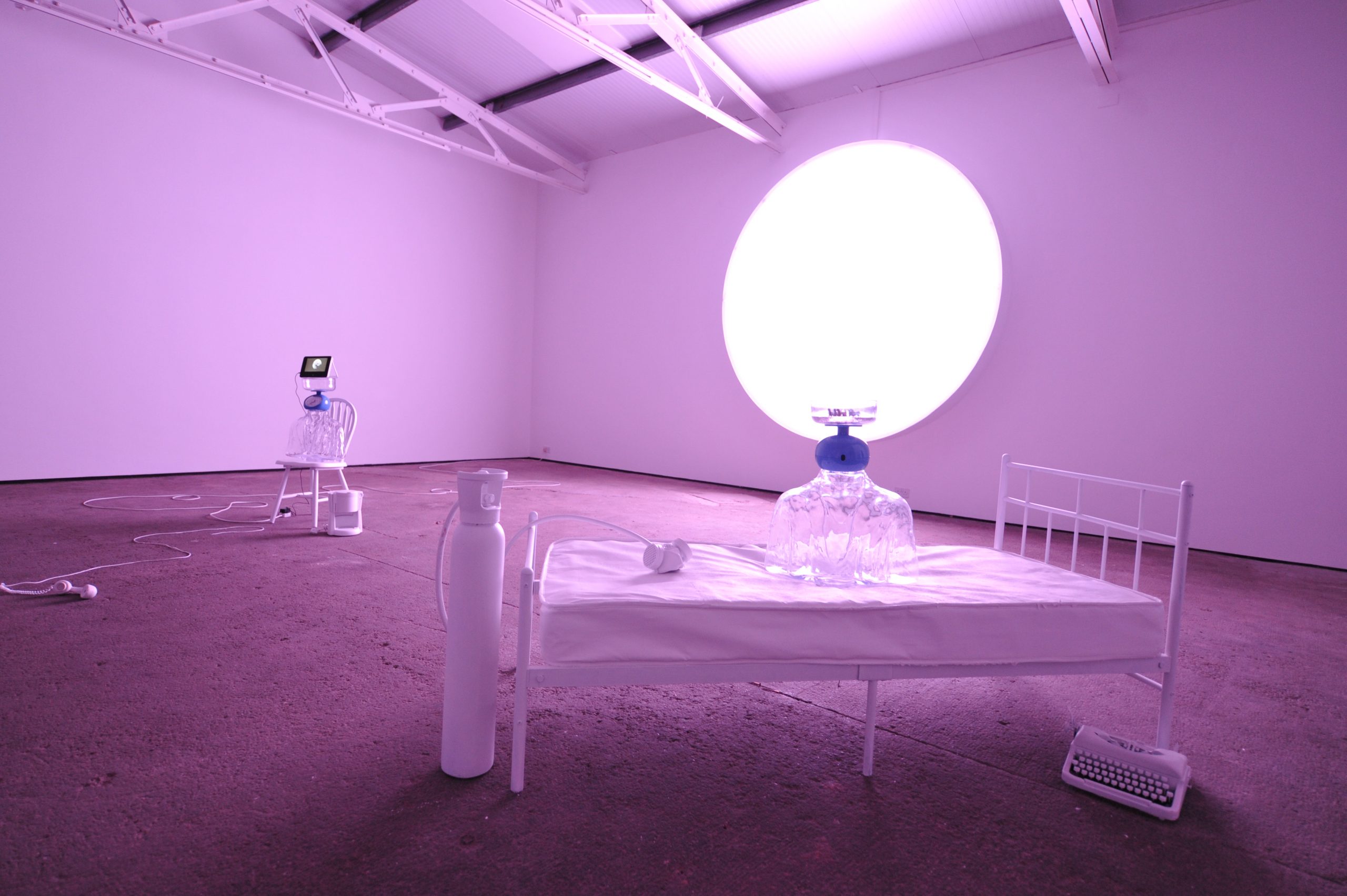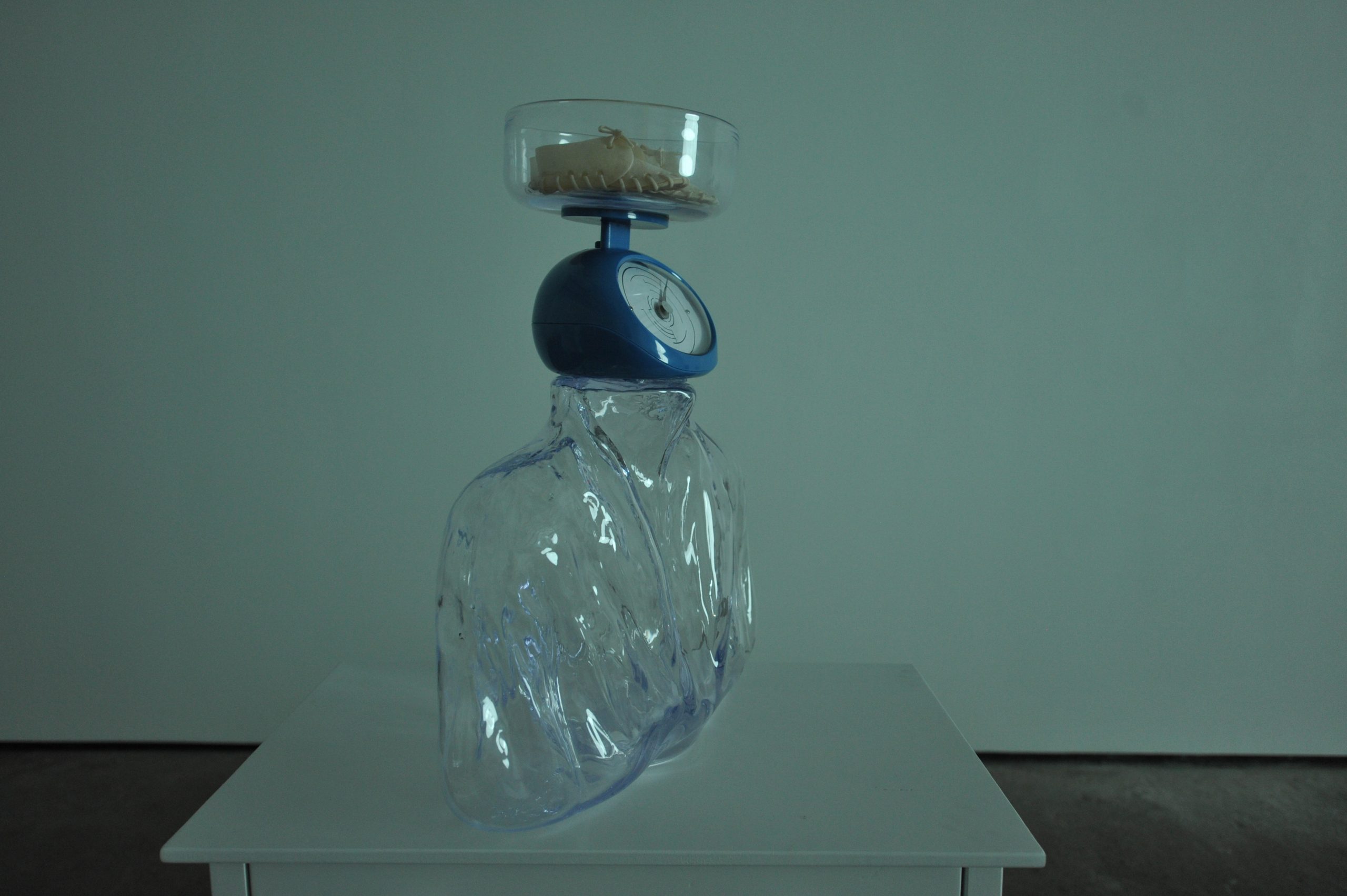
When the Scales Fall from your Eyes
Shown at: IKON Gallery, Birmingham (2009) | ‘Twilight Language’, The Whitworth, The University of Manchester, Manchester (2017)
Installation with mould-blown glass busts, found objects, variable-colour light source
Dimensions variable
When the Scales Fall from Your Eyes dismantles our obsessions with measurement and quantifiable evaluation by gathering scales that set out to weigh impossibilities.
An array of glass cast busts are mounted with heads made of top-loading domestic weighing scales. The busts are placed on and around a motley collection of domestic objects, occasionally interrupted by industrial ephemera: a refrigerator, a washing machine, a chimney, a spool of cable, a typewriter, a hospital bed, an oxygen cylinder and a gas mask on a hospital bed, etc. These objects, sprayed ghostly white, act as perches or pedestals for the weighing scale-headed glass busts.
The eighteen busts, and the assemblages placed on their scales, together comprise a beachcomber’s treasure trove, ranging from the useless and the absurd, with detours into domestic kitsch, into violence, fetishism, preciousness and straightforward banality: there are lipsticks arranged like rockets, a cricket ball in a condom, a mannequin’s shiny bald head set among ice cubes, thirteen tiny brass figures of dogs, four upside down plastic apples, ants crawling into a jar of honey and several other eccentric tableaux that seem to have leaked away from dreams.
Even the moon figures on one of the heads. A small monitor plays a never-ending loop of video footage taken from a camera drifting closer towards the moon, away from the earth’s gravity, and then rebounding back, in a never-ending loop. Perhaps what is being weighed here is the desire for weightlessness itself.















The assemblages could be read as the ‘contents’ of the characters’ heads, providing an estimate of their weightiness. They suggest themselves as trophies, or the accoutrements of a secretive cult, votive offerings to enigmatic and calculating deities.
These creatures face a large flat circle of light (8 feet in diameter) that changes colour. The scene gets bathed in different hues and colours, sometimes calling to mind what might be twilight and dawn on a distant planet. This radiant circle, insubstantial but for the illumination it produces, allows the visitor to the work to see the calipers and devices, the machines for knowing the amount of everything and the value of nothing, in a new light.
The promise and dystopia of relentless measurement, the fantasy of controlling life by owning things and the melancholia of empty illumination, all figure as the themes that underline this work.


